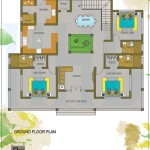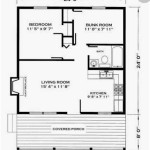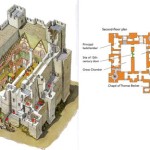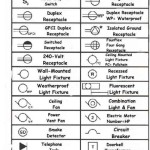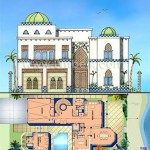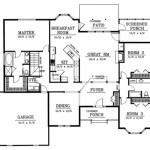House Plans with Cost to Build Estimate: A Comprehensive Guide
Building a house is a significant financial and emotional investment. Before embarking on this journey, it's crucial to have a clear understanding of the costs involved. This article provides you with a comprehensive guide to house plans with cost to build estimates, equipping you with the knowledge to make informed decisions throughout the construction process.
1. Understanding House Plans
House plans are detailed blueprints that serve as a roadmap for the construction of your dream home. These plans include information such as:
- Layout of rooms and their dimensions
- Type and location of doors and windows
- Location of plumbing and electrical fixtures
- Structural details, such as foundation and roofing
- Exterior design elements
House plans can be customized to suit your specific needs, preferences, and budget. They are typically created by architects or home designers and are essential for obtaining building permits and ensuring the smooth execution of construction.
2. Cost to Build Estimates: Breaking Down the Numbers
Cost to build estimates provide a ballpark figure of the total cost of constructing your house. These estimates are typically broken down into several categories, including:
- Materials: This includes all the materials required for construction, such as lumber, concrete, bricks, roofing materials, and fixtures.
- Labor: This is the cost of hiring professionals to complete various tasks, such as foundation work, framing, plumbing, electrical work, and finishing touches.
- Permits and Fees: These are the charges levied by local authorities for permits and inspections required during construction.
- Contingency Fund: This is an amount set aside to cover unexpected costs that may arise during construction.
The total cost to build estimate is calculated by adding up the costs in each category. It's important to note that these estimates can vary depending on factors such as the size and complexity of the house, the location, and the prevailing market conditions.
3. Factors Affecting Cost to Build
Several factors can influence the cost to build your house. These include:
- Size of the House: The larger the house, the more materials and labor will be required, leading to higher costs.
- Complexity of the Design: Elaborate designs with intricate details and custom features will typically cost more than simpler designs.
- Choice of Materials: Higher-quality materials and finishes will generally cost more than standard or budget-friendly options.
- Location: Construction costs can vary significantly depending on the region, availability of labor, and local regulations.
- Market Conditions: Factors such as economic conditions, supply and demand dynamics, and labor shortages can also impact construction costs.
4. Working with Professionals
Building a house is a complex undertaking that requires the expertise of professionals. Here are some key players involved in the construction process:
- Architects and Home Designers: They create the house plans and work with you to bring your vision to life.
- General Contractors: They oversee the entire construction process, hiring subcontractors and coordinating all aspects of the project.
- Subcontractors: These are specialized professionals who handle specific tasks, such as foundation work, framing, plumbing, electrical work, and finishing touches.
- Interior Designers: They help you select finishes, fixtures, and furnishings to create a cohesive and stylish interior space.
Choosing reputable and experienced professionals is crucial for ensuring the quality and integrity of your house.
5. Tips for Cost-Effective Building
If you're looking to save money on construction costs, consider the following tips:
- Keep the Design Simple: Avoid overly complex designs and opt for a simpler layout that minimizes the need for expensive materials and labor.
- Choose Cost-Effective Materials: There are many affordable materials available that can provide a stylish and durable finish without breaking the bank.
- Plan Ahead: Proper planning and coordination can help you avoid costly delays and overruns during construction.
- Consider Energy-Efficient Features: Incorporating energy-efficient features can save you money on utility bills in the long run.
- Get Multiple Quotes: Obtain quotes from several contractors before making a decision. This will give you a better understanding of the market rates and help you negotiate a fair price.
Remember, the best way to control construction costs is to have a clear understanding of your goals and budget from the outset. Working closely with your architect, contractor, and other professionals will help you create a beautiful and functional home that fits your needs without exceeding your budget.

Estimated Cost To Build Report Information House Plans And More

Get The Lowdown On Cost To Build Estimates Houseplans Blog Com

House Cost Estimator To Build A Home Building

Get The Lowdown On Cost To Build Estimates Houseplans Blog Com

Get The Lowdown On Cost To Build Estimates Houseplans Blog Com

Get The Lowdown On Cost To Build Estimates Houseplans Blog Com

Get The Lowdown On Cost To Build Estimates Houseplans Blog Com

Est House Plans To Build Simple With Style Blog Eplans Com

Cost To Build A Home

Pebble Creek House Plan Archival Designs

